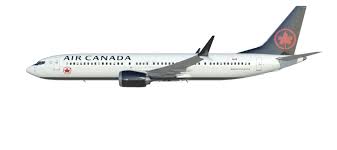Air Canada is readying for the battle of the Atlantic
The first Battle of the Atlantic happened during the Second World War and it took place on the sea, but the next one will happen in the air and it will oppose airlines.
The transatlantic market is unique because it is the biggest one where large body aircrafts are almost the only type of aircraft in use. But the arrival of a new generation of highly fuel efficient turbofan engines is about to disrupt the way things are being done.
Legacy carriers like Air Canada have a fleet of wide-body aircrafts that are used to connect hub airports like Pearson-Heathrow or Trudeau-Charles de Gaulle. Smaller aircrafts like A320 or Dash8 feed the bigger ones by flying shorter regional routes to the hub. Even if single aisle aircrafts have better economy than the wide body’s, they are not used for transatlantic flights because their range is not sufficient for those longer routes. Reengined aircrafts like the A320NEO and the B737MAX plus the new generation aircrafts like the C Series now have transatlantic capabilities that will allow airlines to do things that were not possible before.
Air Canada announced a few days ago, that beginning in June 2018 it will offer a direct flight between Montreal and Dublin in Ireland twice a week using one of its brand new Boeing 737-MAX8. A direct flight between those two cities will allow passengers to avoid connecting at Heathrow and Air Canada will be able to charge a premium and will not have to share the revenues generated with another airline that operates the connecting flight. Big airports like Heathrow are very expensive for airlines and is the main reason why low-cost carriers (LCC) try not to use them as much as they can.
Deploying parts of its new narrow-body aircrafts on thin routes across the Atlantic will allow Air Canada to use their better economics to face the arrival of LCC on transcontinental routes. Within the next few years LCC’s will invade this market with a swarm of new single aisle aircrafts. Only those who have the lowest operating cost or a niche product will be able to make profits.
On this side of the ocean, Air Canada is the first legacy carrier to take advantage of the longest range of new single aisle aircrafts, positioning itself as a pioneer. But within the next ten years, the use of narrow-body aircrafts for transatlantic liaisons may become normal.
>>> Suivez-nous sur Facebook et Twitter

